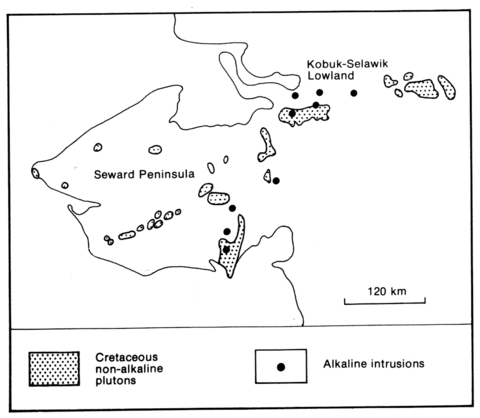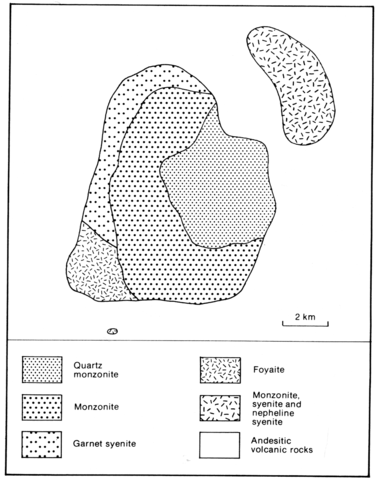stripes
Granite Mountain is a prominent high point in the central-eastern part of the Seward Peninsula. It forms an approximately circular, zoned pluton covering 70 km2 intruding Lower Cretaceous andesitic volcanics. There is a contact aureole about 800 m wide of hornblende and albite-epidote-hornblende facies rocks. The pluton consists of a core of equigranular quartz monzonite, an inner crescentic mass of massive to porphyritic monzonite with some quartz monzonite, and an outer partial crescent of foyaite and garnet syenite. Separate intrusions of nepheline syenite and monzonite occur to the northeast and southwest of the main complex. Monzonite and quartz monzonite consist of K-feldspar, plagioclase (An30-18), hornblende, pyroxene, garnet and accessory biotite. The garnet syenite contains 30-60% K-feldspar, 22-38% plagioclase (An30-28), garnet, hornblende, pyroxene and accessory nepheline and fluorite. The foyaites have 1-5% nepheline, 60-70% K-feldspar, 0-15% plagioclase (An30), 10-20% melanite and hornblende with accessory fluorite. The foyaite is cut by dykes of borolanite, pulaskite and phonolite, and pseudoleucite porphyry forms xenoliths in the foyaite with pseudoleucites up to 5 cm across. Pseudoleucite porphyry dykes also cut the country rocks. Analyses of these rocks are available (Miller, 1972, Table 3).
MILLER, T.P. 1972. Potassium-rich alkaline intrusive rocks of western Alaska. Bulletin of the Geological Society of America, 83: 2111-28


